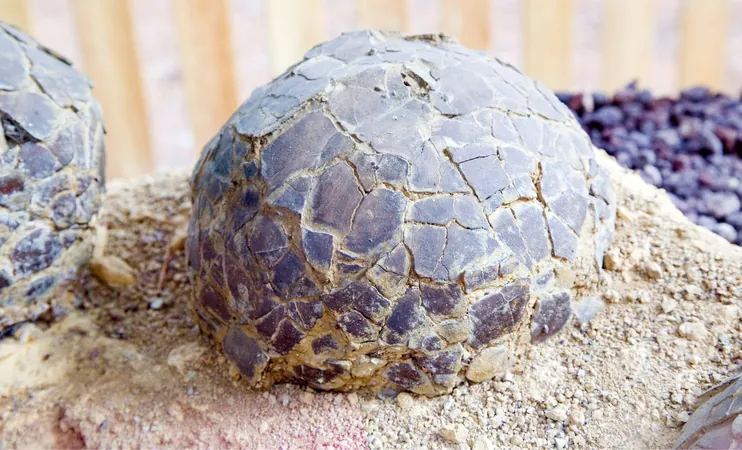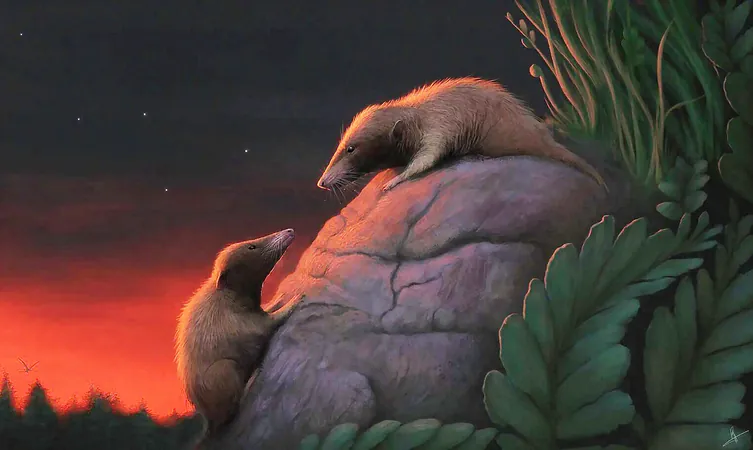
Ancient Birds Thrived in the Arctic 73 Million Years Ago, Scientists Discover
2025-06-01
Author: Sarah
Unveiling a Shocking Discovery beneath the Ice
In a groundbreaking revelation for paleontology, scientists have uncovered tiny fossil fragments in northern Alaska, indicating that ancient birds were nesting in the Arctic a staggering 73 million years ago—30 million years earlier than once thought. This astonishing finding could revolutionize our understanding of avian evolution and the survival tactics of creatures in extreme climates.
A Study That Redefines Our Understanding of Prehistoric Life
Led by researcher Lauren Wilson from Princeton University, the study is anchored in over 50 fossilized bone fragments sourced from the Prince Creek Formation, a site once situated on a coastal floodplain. Today, this area lies 1,000 to 1,600 kilometers away from the North Pole, but during the Late Cretaceous period, it was a bustling breeding ground.
The excavation team braved harsh winter conditions as they dug under temperatures plummeting to -30 °C (-22 °F), working tirelessly from tent setups. Back in their labs, they sorted through sediments, revealing fragile bone pieces belonging to fledgling birds. These findings are particularly fascinating due to the sponge-like texture of the bones, indicative of rapid growth in newborns—raising questions about how these birds managed to thrive in such a harsh environment.
Birds and Dinosaurs: A Shared Habitat
While modern birds in the Arctic often migrate to cope with the cold, the existence of these young fossils suggests that some ancient birds were already raising their young in these icy latitudes during the time of the dinosaurs. The Late Cretaceous was a period thriving with diverse life, including notorious non-avian dinosaurs like tyrannosaurs and ceratopsians, some of which also nested in the Arctic.
What adds further intrigue to this discovery is the notable absence of 'opposite birds'—the enantiornithines, which were prevalent in other parts of the world during this era. Gerald Mayr from the Senckenberg Research Institute speculates that the birds closely related to today’s species might have had evolutionary advantages that enabled their adaptation to Arctic conditions, highlighting a remarkable chapter in avian evolution.
The Evolutionary Puzzle Continues to Evolve
Wilson’s team identified three distinct groups among the fossilized remains: extinct toothed birds resembling modern loons, gull-like toothed birds, and some early ancestors of current bird species. While the specifics of their nesting behaviors are still uncertain—whether they were permanent residents or summer breeders—the evidence unmistakably points to their significant breeding activities in high-latitude regions long before previously documented.



 Brasil (PT)
Brasil (PT)
 Canada (EN)
Canada (EN)
 Chile (ES)
Chile (ES)
 Česko (CS)
Česko (CS)
 대한민국 (KO)
대한민국 (KO)
 España (ES)
España (ES)
 France (FR)
France (FR)
 Hong Kong (EN)
Hong Kong (EN)
 Italia (IT)
Italia (IT)
 日本 (JA)
日本 (JA)
 Magyarország (HU)
Magyarország (HU)
 Norge (NO)
Norge (NO)
 Polska (PL)
Polska (PL)
 Schweiz (DE)
Schweiz (DE)
 Singapore (EN)
Singapore (EN)
 Sverige (SV)
Sverige (SV)
 Suomi (FI)
Suomi (FI)
 Türkiye (TR)
Türkiye (TR)
 الإمارات العربية المتحدة (AR)
الإمارات العربية المتحدة (AR)